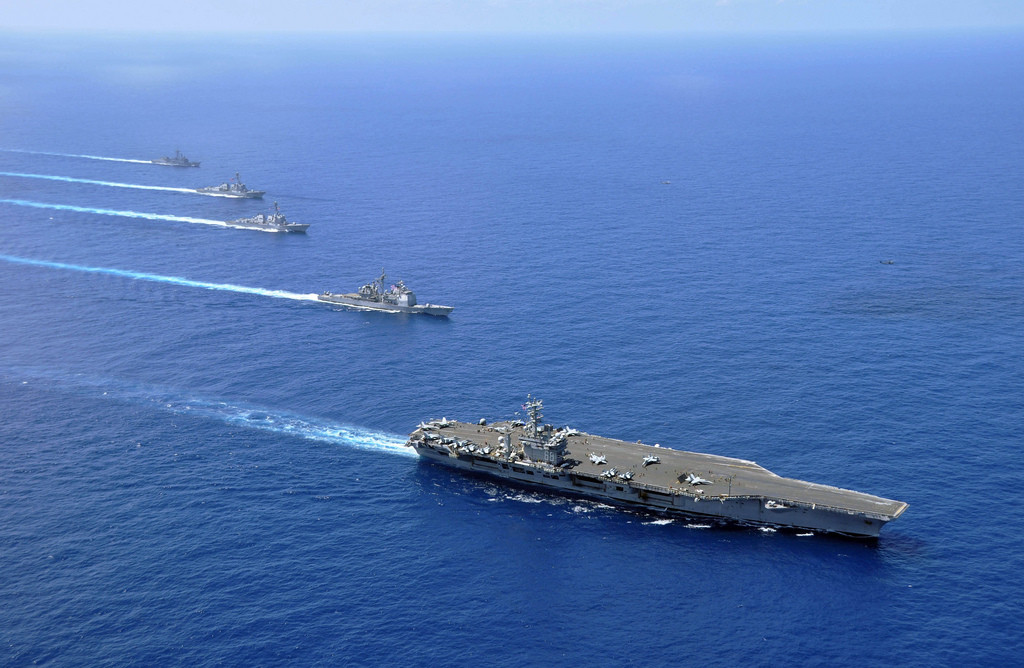China’s Most Dangerous Missile (So Far)

Buried on page 40 of the Pentagon’s latest annual report on China’s military power is a brief mention of the YJ-12, a recent addition to China’s portfolio of anti-ship cruise missiles (ASCM). The report notes that, “The new missile provides an increased threat to naval assets, due to its long range and supersonic speeds.” True, but in an understated way. In fact, the YJ-12 is the most dangerous anti-ship missile China has produced thus far, posing an even greater risk to the U.S. Navy’s surface forces in the Western Pacific than the much-discussed DF-21D anti-ship ballistic missile. The arrival of the YJ-12 is one more indication of how the U.S. Navy is falling further behind in the missile competition against China, exposing flaws in operating concepts that U.S. and allied commanders and policymakers have relied on for years.
According to a 2011 study that appeared in Naval War College Review, the YJ-12 ASCM has a range of 400 kilometers, making it one of the longest-ranged ASCMs ever fielded (and much longer than the 124 kilometer limit of the U.S. Navy Harpoon). Crucially, at 400 kilometers, Chinese attack aircraft will be able to launch the YJ-12 beyond the engagement range of the Navy’s Aegis Combat System and the SM-2 surface-to-air missiles that protect U.S. aircraft carrier strike groups. In the past, when adversary ASCMs were limited to 100 kilometers or less, a carrier strike group had more time to react with its own aircraft and defensive missiles. It also had the option of engaging enemy aircraft before they launched their ASCMs, and more redundancy to cope with such attacks. With its 400 kilometer range, the YJ-12 will greatly erode these previous advantages.
A realistic future scenario is an attack on two or more axes by two Chinese Flanker regiments (totaling 48 Su-30 MKK or J-11B Flanker fighter-bomber variants). These Flankers (roughly corresponding to U.S. Air Force F-15E fighter-bombers, capable of supersonic speeds, and possessing a combat radius of 1,500 kilometers) could each be armed with two to four YJ-12 ASCMs. Although the carrier strike group’s combat air patrol could shoot down a few of the Flankers before they launched their missiles, the strike group would still face the prospect of defending against over a hundred supersonic ASCMs approaching from several directions at a wave-top height. The group’s close-in air defenses would have less than 45 seconds to engage the missiles after they appeared on the horizon. The YJ-12s would employ a variety of sensor types to find their targets and execute dramatic cork-screw turns to evade final defenses. A study from the Naval Postgraduate School concluded that in past engagements of anti-ship missiles against alerted surface warships, 32 percent of the attacking missiles scored hits. If only five percent of such a saturation YJ-12 attack impacted targets, it would still be a bad day for the carrier strike group.
The prospective Flanker/YJ-12 combination, eventually capable of reaching targets up to 1,900 kilometers from China, is an even more serious problem for the U.S. Pacific Fleet than is China’s DF-21D anti-ship ballistic missile. That missile, still apparently not tested against a moving target at sea, relies on a fragile network of space-based observation and communication links that will be prime targets for the U.S. during a potential conflict. By contrast, an attack by China’s land-based Flanker regiments would be comparatively straightforward and would rely on overwhelming mass and brute force rather than an exquisite and likely fragile networked communication architecture for success.
Officials in the U.S. Navy are well aware of the missile threat their surface forces face. The Navy plans to win the future “outer air” battle well over the horizon from the carrier strike group by introducing new long-range air and missile defense capabilities to its surface forces. It also plans to network these sensors and weapons into a shared, cooperative “common engagement capability.” Components of this longer-range capability will include the new carrier-based E-2D early warning and control aircraft, the long-range SM-6 surface-to-air missile, the F-35C aircraft, and software that will share information among the various platforms. The Navy’s intent is to restore the status quo prior to the arrival of missiles like the YJ-12, namely the ability to shoot down enemy missile-carrying aircraft at longer ranges and well before they can launch their ASCMs.
We should hope that the Navy’s long-range network engagement plans succeed. But they seem susceptible to the same fragilities the Navy is counting on to thwart the DF-21D anti-ship ballistic missile and its required network architecture. Meanwhile, the simple brute force approach employing saturation ASCM attacks will benefit in the future from even longer-ranged ASCMs equipped with even better target seekers, a trend that has been in place for many years. In this competition, China’s land-based aircraft and missiles seem to possess the competitive cost and technology advantages.
The result is increasing doubts about the U.S. military’s long-standing operating concepts in the Western Pacific. And from those doubts could come increasing confidence by China’s military commanders and policymakers that they and not the U.S. will benefit from escalation during a potential future crisis. If that becomes the case, comparisons between 2014 and 1914 would be right on target.
Robert Haddick is an independent contractor at U.S. Special Operations Command. He writes here in a personal capacity. In September 2014, Naval Institute Press will publish “Fire on the Water: China, America, and the Future of the Pacific,” Haddick’s book on the rise of China’s military power and U.S. strategy in East Asia.
Photo credit: Official U.S. Navy Imagery
